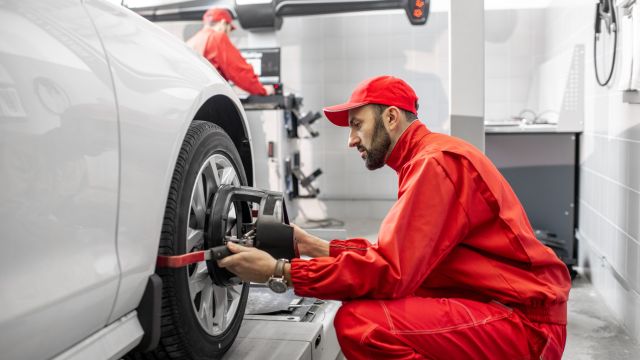Exclusion lists are longer than coverage lists. Wear-and-tear items like brake pads, rotors, shocks, struts, batteries, and tires are almost never covered. Maintenance items get excluded, which means if your engine fails due to neglected oil changes, the warranty won't pay.
"Bumper-to-bumper" doesn't mean everything. Even comprehensive plans exclude electronics, air conditioning components, suspension parts, and interior elements. Read the actual contract—marketing language and legal coverage are entirely different beasts.
Pre-existing conditions void coverage. That check engine light you ignored before buying the warranty? Any related repairs won't be covered. Warranties only protect against failures that occur after coverage begins and aren't related to previous problems.
Deductibles add hidden costs. Many extended warranties carry $100-$250 deductibles per repair visit, meaning your "covered" transmission repair still costs you hundreds out of pocket. Factor these into your cost calculations rather than assuming "covered" means "free."
The True Cost of Extended Warranties
Upfront prices feel steep because they are. Third-party extended warranties range from $1,200 to $4,500 depending on coverage level, vehicle age, and contract length. Dealer warranties can hit $5,000-$7,000 for luxury vehicles with comprehensive coverage.
Monthly payment plans hide the real price. Financing a $3,000 warranty at $75/month for 48 months costs you $3,600 total due to interest charges. The convenient payment structure makes you pay hundreds extra for the privilege of spreading costs over time.
Warranty companies profit when you don't claim. The business model depends on most customers never filing claims that exceed their warranty cost. Statistically, the average customer pays more in warranty fees than they receive in repair coverage—that's how these companies stay profitable.
Cancellation refunds get prorated to nothing. If you cancel early, you'll get back only the unused portion minus administrative fees that can eat 10-25% of your refund. The first few months of coverage carry the highest cancellation penalties.
Transfer fees reduce resale value benefits. Selling your car with a transferable warranty sounds great until you discover the $50-$150 transfer fee and paperwork hassle that makes it less attractive to buyers than you'd hoped.
DIY Repairs: The Real Skill Requirements
Basic maintenance needs zero special skills. Changing air filters (5 minutes), replacing windshield wipers (3 minutes), and swapping cabin air filters (10 minutes) require only your hands and save $20-$50 per visit to a shop.
Oil changes save $30-$50 each time. With a $15 oil filter wrench, $25 oil drain pan, and $30 in oil and filter supplies, you'll break even after two changes and save money forever after. The 20-minute process becomes routine after your first attempt.
Brake pad replacement saves $200-$400 per axle. Parts cost $40-$80 versus $250-$500 at shops for the same job. You'll need basic hand tools (wrenches, C-clamp) and 45 minutes per wheel, but online videos walk you through every step.
Battery replacement takes 10 minutes and saves $50-$100. The shop charges $120-$180 for a battery you can buy for $60-$120 and install yourself with a single wrench. No special knowledge required—just disconnect negative first, then positive, replace, reconnect positive first, then negative.
Spark plug changes are surprisingly easy. Most vehicles allow straightforward access to spark plugs requiring only a socket wrench and spark plug socket ($15). Save $150-$300 in labor for a 30-minute job that dramatically improves engine performance.
When DIY Becomes Dangerous Territory
Transmission work belongs with professionals. Even simple transmission service requires specialized equipment and knowledge. Attempting transmission repairs yourself risks $3,000-$5,000 in damage from mistakes that turn minor issues into major catastrophes.
Electrical diagnostics need professional tools. Modern vehicles use complex computer systems requiring $2,000+ diagnostic scanners to properly troubleshoot. Guessing at electrical problems wastes money on wrong parts and can cause additional system failures.
Suspension and alignment require precision equipment. While you can replace shocks and struts yourself, proper wheel alignment needs equipment no DIYer owns. Skipping alignment after suspension work destroys tires in months, negating any savings.
Engine rebuilds exceed most DIY skill levels. Unless you're already mechanically inclined with significant experience, engine work involving internal components should go to professionals. The cost of mistakes exceeds the cost of paying someone who knows what they're doing.
Safety-critical systems aren't worth the risk. Brake system bleeding, airbag repairs, and structural welding can kill you or others if done incorrectly. Some savings aren't worth pursuing when lives depend on the work quality.
The Hybrid Approach: Strategic DIY with Professional Backup
Handle routine maintenance yourself, outsource repairs. Change your own oil, filters, wipers, and other consumables while paying professionals for complex repairs. This strategy maximizes savings on frequent tasks while accessing expertise when needed.
Buy extended warranty only for high-risk vehicles. Luxury brands (BMW, Mercedes, Land Rover, Jaguar) and models with known reliability issues justify warranty coverage. Buying a warranty for a Toyota Camry or Honda Civic makes little sense given their legendary reliability.
Learn your vehicle's weak points before deciding. Research your specific make, model, and year on reliability databases and owner forums. If your model has known transmission problems, warranty coverage makes sense. If it's bulletproof except for minor issues, skip the warranty.
Invest warranty money into a dedicated repair fund. Put that $2,000 warranty cost into a high-yield savings account earning 4-5% interest. When repairs come, you've got cash ready plus the interest you earned. Anything left over stays in your pocket.
Build relationships with independent mechanics. Find a trustworthy independent shop that charges 30-50% less than dealers for identical work. Use them for jobs beyond your skill level while handling simple maintenance yourself.
Real Math: Five-Year Cost Comparison
Warranty scenario: $2,500 warranty + $500 deductibles over five years. Assume two major repairs (transmission and engine component) that would cost $6,000 without coverage. Your out-of-pocket: $3,000 ($2,500 warranty + two $250 deductibles). Savings: $3,000.
DIY scenario: $300 in tools + $1,200 in maintenance parts over five years. Handling all basic maintenance yourself saves approximately $2,500 in labor costs. If the same major repairs hit, you'd pay $6,000, making your total outlay $7,500. Loss: $4,500 compared to warranty.
Hybrid scenario: $300 tools + $1,200 parts + $2,000 repair fund. You DIY all maintenance, saving $2,500 in labor. The two major repairs cost $6,000, paid from your repair fund that's now worth $2,100 with interest. Your out-of-pocket: $7,400 total. Loss: $4,400 compared to warranty.
Plot twist: if those major repairs never happen. Warranty scenario: You spent $2,500 for nothing. DIY scenario: You spent $1,500 on maintenance and saved $2,500 in labor, netting $1,000 ahead. Hybrid scenario: Same $1,000 ahead plus $2,100 in your repair fund for future needs, putting you $3,100 ahead.
The reliability wildcard changes everything. For vehicles with 90%+ problem-free track records, extended warranties statistically lose money. For vehicles with 50-70% reliability ratings, warranties can pay off if you're risk-averse and want predictable costs.
Your Car's Age and Mileage Matter Enormously
Warranties on new cars are redundant waste. Factory warranties already cover 3 years/36,000 miles bumper-to-bumper and 5 years/60,000 miles powertrain. Extended warranties during this period duplicate coverage you already have, benefiting only the warranty company.
The 60,000-100,000 mile window is decision time. This is when factory coverage expires but vehicles are still relatively reliable. If your car has been problem-free, skip the warranty. If you've already had multiple issues, coverage might make sense.
High-mileage vehicles (150,000+ miles) can't get most warranties. By the time major repairs become statistically likely, warranty companies won't sell you coverage. You're stuck with DIY or professional repairs at full cost regardless.
Vehicle value versus warranty cost creates absurdity. Paying $3,000 to warranty a car worth $5,000 makes no financial sense. If a major repair exceeds the vehicle's value, you're better off replacing the car than fixing it, warranty or not.
Hidden Factors That Swing the Decision
Your time has value—calculate it honestly. If oil changes take you 45 minutes versus $50 at a shop, you're "earning" $66/hour by DIYing. If your time is worth more than that in your actual job or side hustles, paying professionals makes economic sense.
Workspace access changes everything. DIY assumes you have a garage, driveway, or parking spot where you can work on your car legally and safely. Apartment dwellers without adequate workspace can't DIY even if they want to, making warranties more attractive.
Tool investment reaches a ceiling. Basic maintenance tools cost $200-$500 total and last decades. Advanced diagnostic equipment and specialty tools cost thousands and rarely pay for themselves unless you're working on multiple vehicles constantly.
Regional labor costs vary wildly. Mechanic rates range from $75/hour in rural areas to $175/hour in major cities. DIY saves more where professional labor costs more, potentially justifying warranty costs in cheaper labor markets.
Your stress tolerance matters more than you think. Some people find working on cars meditative and satisfying. Others feel anxious and frustrated by mechanical work. If DIY causes you genuine stress, paying for warranties or professional service improves your quality of life beyond mere dollars.
The Verdict: It's Not Actually Close
For most people with reliable vehicles, DIY maintenance combined with a dedicated repair fund beats extended warranties financially. The math consistently favors self-reliance when you factor in warranty exclusions, deductibles, and the statistical unlikelihood of major repairs on well-maintained vehicles. According to Consumer Reports data, only 55% of extended warranty buyers ever file a claim, and those who do typically receive less in repair coverage than they paid for the warranty.
But here's what the pure math misses: extended warranties buy peace of mind and predictable budgeting for people who can't handle surprise repair bills. If a $3,000 transmission repair would devastate your finances, paying $2,000 for warranty coverage provides genuine value beyond the actuarial calculation. You're not just buying repair coverage—you're buying protection from financial catastrophe.
The DIY path offers more than cost savings—it grants you knowledge, self-sufficiency, and freedom from dependence on shops that might upsell unnecessary services. Learning to maintain your vehicle transforms it from mysterious money pit to understandable machine you control. That empowerment has value beyond dollars, building skills that serve you for life across multiple vehicles.
The question isn't really which approach saves more money—it's which approach aligns with your skills, values, risk tolerance, and life situation. A mechanically-inclined person with time and workspace should obviously DIY. Someone working 60-hour weeks with no garage space should obviously pay for service. Most people fall somewhere between, needing to honestly assess their capabilities and constraints rather than following generic advice that doesn't fit their reality.
Take One Action Right Now
Open your car's owner's manual to the maintenance schedule page and identify one task you could learn to do yourself this month. Start with something simple—replacing the engine air filter or checking tire pressure—rather than attempting complex repairs immediately. Order the basic tools you need ($30-$50 for your first DIY project) and watch three different YouTube tutorials for the same task to see multiple approaches. Pick one and try it right now. Momentum starts small, and every dollar you save on basic maintenance is a dollar you can invest in your repair fund, tools, or anything else that matters more than enriching warranty companies. You've got this.
📚 Sources
Consumer Reports. (2022). Extended auto warranties: Are they worth the money? Consumer Reports Auto Analysis.
🔍 Explore Related Topics












